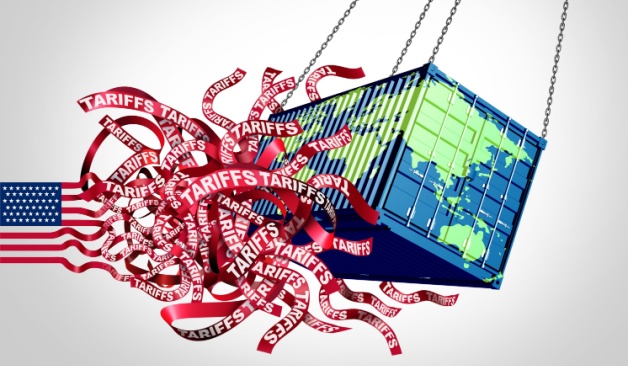
History of US Tariffs and Its Impact on Global Economy- Analysis & Interpretation
Tariffs aren’t new. They’ve been part of US economic policy since the 18th century. But each time the US imposes or hikes tariffs, it sends more than just a price signal. Tariffs shake up trade flows, investor sentiment, and the very foundation of global economics. While the world today may be watching the US-China trade relationship with concern, it’s not the first time US tariffs have caused ripple effects far beyond its borders.
Let’s take a trip back to the foggy past and explore key milestones in the history of US tariffs, and how they’ve influenced the global economy. For the past could have invaluable lessons as we look to the future.
The 19th Century: Tariffs as a Source of Revenue
In the 19th century, tariffs weren’t used as a weapon to fight a trade war. They were used to fund the federal government. With no income tax in place, customs duties were a major revenue source. The Tariff Act of 1789, signed by George Washington, marked the country’s first official tariff policy. It served two purposes at once: raising revenue and protecting American industries.
By the 1820s, tensions between the industrial North and the agrarian South turned tariff policy into a matter of contention. The Tariff of Abominations (1828) raised duties to nearly 50%, sparking a crisis that almost led to secession (withdrawal from the Union) by the state of South Carolina. Though the issue was ultimately addressed, it highlighted how tariffs could disrupt economic balances and even cause a domestic divide.
The Interwar Years: A Cautionary Tale
Let us fast forward a century. The Great Depression of the 1930s had just begun, and policymakers were scampering to protect American jobs and industry. Enter the Smoot-Hawley Tariff Act of 1930, which raised duties on over 20,000 imported goods.
The global response? Retaliation! Sounds familiar?
Canada, European countries, and others raised their own tariffs in return, following which global trade volumes fell by nearly 66% in the 5-year period from 1929 to 1934. While the added tariffs didn’t cause the Great Depression, it made a bad situation much worse. Export-driven economies from Europe to Asia quickly contracted and unemployment sharply soared. The episode remains one of the most cited examples of how protectionism can backfire.
Post World War II: Flipping the Script
After the Second World War, the US flipped the script. It became the architect of a multilateral trading system designed to prevent another Smoot-Hawley-induced crisis. Institutions like the GATT (General Agreement on Tariffs and Trade) and then the World Trade Organization (WTO) aimed to reduce tariffs globally and promote trade liberalisation.
During the period from the late 1940s to the early 2000s, average US tariff rates fell steadily. Global trade flourished and countries integrated into supply chains – growing the global GDP and helping emerging markets get a foothold in global commerce. Broadly speaking, tariffs were becoming less visible in mainstream economic policy.
The Late 2010s: Tariffs Make a Comeback
The modern resurrection of tariffs came with the US-China trade war (2018–2020) when over $360 billion worth of Chinese goods were slapped with tariffs on products ranging from steel and solar panels to washing machines. China, just as it would again do in 2025, responded with tariffs of its own. And the global effects were very visible. Supply chains were impacted, emerging markets felt the pinch, commodity markets swung wildly with trade-related headlines and global growth forecasts were slashed.
And while studies noted that some domestic industries gained temporary protection, consumers felt the ultimate burden of cost increase. There wasn’t a meaningful removal of tariffs once the regime changed, giving us the invaluable hint that tariffs may now be viewed as a tool of strategic competition, not just economic policy.
The Global Impact
Tariffs alter price signals, create arbitrage opportunities, and most crucially, invite tit-for-tat retaliation. And the countries caught in the crossfire were the ones heavily dependent on global trade. For instance, export-reliant German automakers saw collateral damage during the US-China spat. Southeast Asian countries, on the other hand, saw an uptick in exports as companies sought to reroute supply chains—benefiting some while hampering others. Meanwhile, commodities such as soybeans, crude oil, and metals witnessed explosive volatility.
Tariffs also have a chilling effect on long-term investments. Businesses faced with uncertain trade rules tend to delay capital expenditure, hurting innovation and productivity, and ultimately, investors.
Lessons from History
History has taught us that tariffs may serve short-term goals, but they often come at the cost of long-term trade-offs. While they can be useful as leverage or protection for specific industries, they tend to distort markets, raise prices, and invite retaliation. The global economy that is built on interconnectedness, seldom reacts in isolation. And if we were to sum up the main lesson history has taught us, it is that walls may feel secure, but bridges build prosperity!










